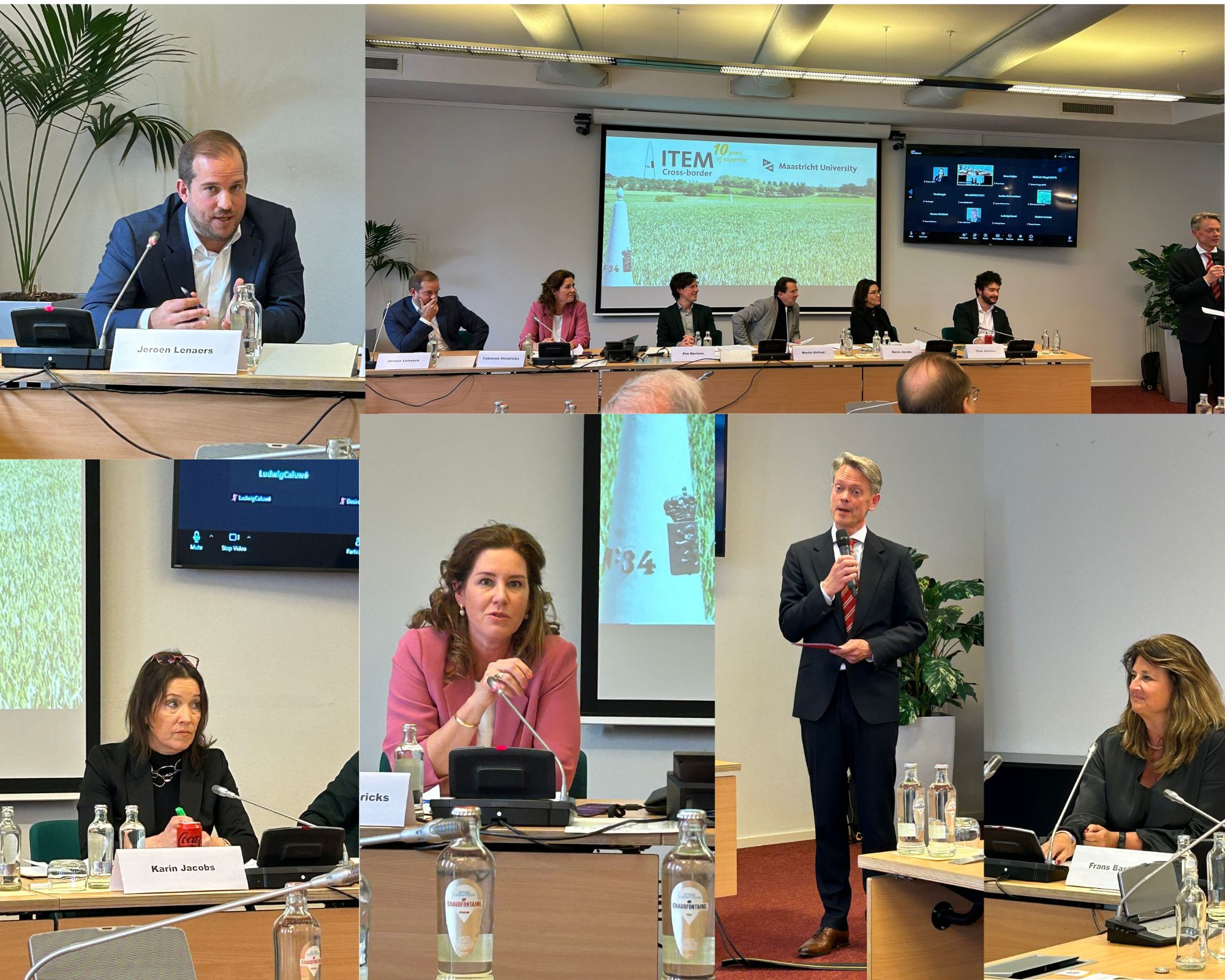On 29 April 2024, the Next ITEM: European Elections and Border Regions event took place at EIPA Maastricht. During this event, ITEM experts Martin Unfried and Pim Mertens explained the findings of their ITEM Reflection: European Elections 2024 and Border Regions regarding cross-border perspectives in European party programmes. Candidate MEPs Karin Jacobs (D66), Fabiènne Hendricks (VVD), Teun Janssen (VOLT) and MEP Jeroen Lenaers (CDA) were invited to discuss the main finding, which is that border regions are not in the picture. The event was opened by Maastricht alderman Frans Bastiaens. Frans Bastiaens stressed the need for a strong focus on border regions, where Europe is as strong as its regions are.
ITEM reflectie
Op 29 april 2024 vond het evenement Next ITEM: European Elections and Border Regions plaats bij EIPA Maastricht. Tijdens dit evenement lichtten ITEM-experts Martin Unfried en Pim Mertens de bevindingen toe van hun ITEM Reflection: European Elections 2024 and Border Regions over grensoverschrijdende perspectieven in Europese partijprogramma’s. Kandidaat Europarlementariërs Karin Jacobs (D66), Fabiènne Hendricks (VVD), Teun Janssen (VOLT) en Europarlementariër Jeroen Lenaers (CDA) waren uitgenodigd om te discussiëren over de belangrijkste bevinding, namelijk dat grensregio’s niet in beeld zijn. Het evenement werd geopend door de Maastrichtse wethouder Frans Bastiaens. Frans Bastiaens benadrukte de noodzaak van een sterke focus op grensregio’s, waar Europa zo sterk is als haar regio’s zijn.
Internal market
Our single market is essential in regions where people cross borders daily for work, study, living, shopping and more. However, there are still too many obstacles (such as tax barriers) that limit the development of border regions. Border regions are seen as the ‘testing grounds’ of European integration. Yet there is still the paradox that European integration has not led to the expected favourable situation. It is therefore surprising that border regions are not considered a separate category in the European manifestos and that no mention is made of border regions and their specific requirements and approaches. ‘The Meuse-Rhine Euroregion in particular is a best practice, a kind of testing ground for new EU policies focused on education, health and other topics,’ says Karin Jacobs. Therein also lies an instrumental role for Interreg, which plays an important role in the development of the internal market and Europe’s internal borders with its projects focused on cross-border healthcare, for example. Or, as Fabiènne Hendricks puts it, ‘Interreg is a very important funding mechanism for the cross-border region for all types of projects’.
Cross-border assessments
So if we want to make life easier in border regions and really see border regions as testing grounds for European integration, we should not only look at Europe, but also at national governments and national policies and what this means for border regions. ‘ITEM is doing a good job with these cross-border impact assessments’ says Jeroen Lenaers. ‘This is something we should perhaps do more often at European level, also to provide insight into what the added value can be of addressing issues across borders.’ Engaging and connecting citizens across borders to talk about cross-border issues can open up new perspectives. ‘It requires a cultural shift to act and organise democracy across borders,’ said Teun Janssen.
ITEM director Anouk Bollen closed the event by saying that cooperation between all of us and involvement of EU citizens is the key to success in strengthening Europe’s border regions. The analysis and discussion is clear, cross-border regions are essential testing grounds in Europe, but their situation and development need specific attention and investment.
Watch the Next ITEM back on our YouTube channel

